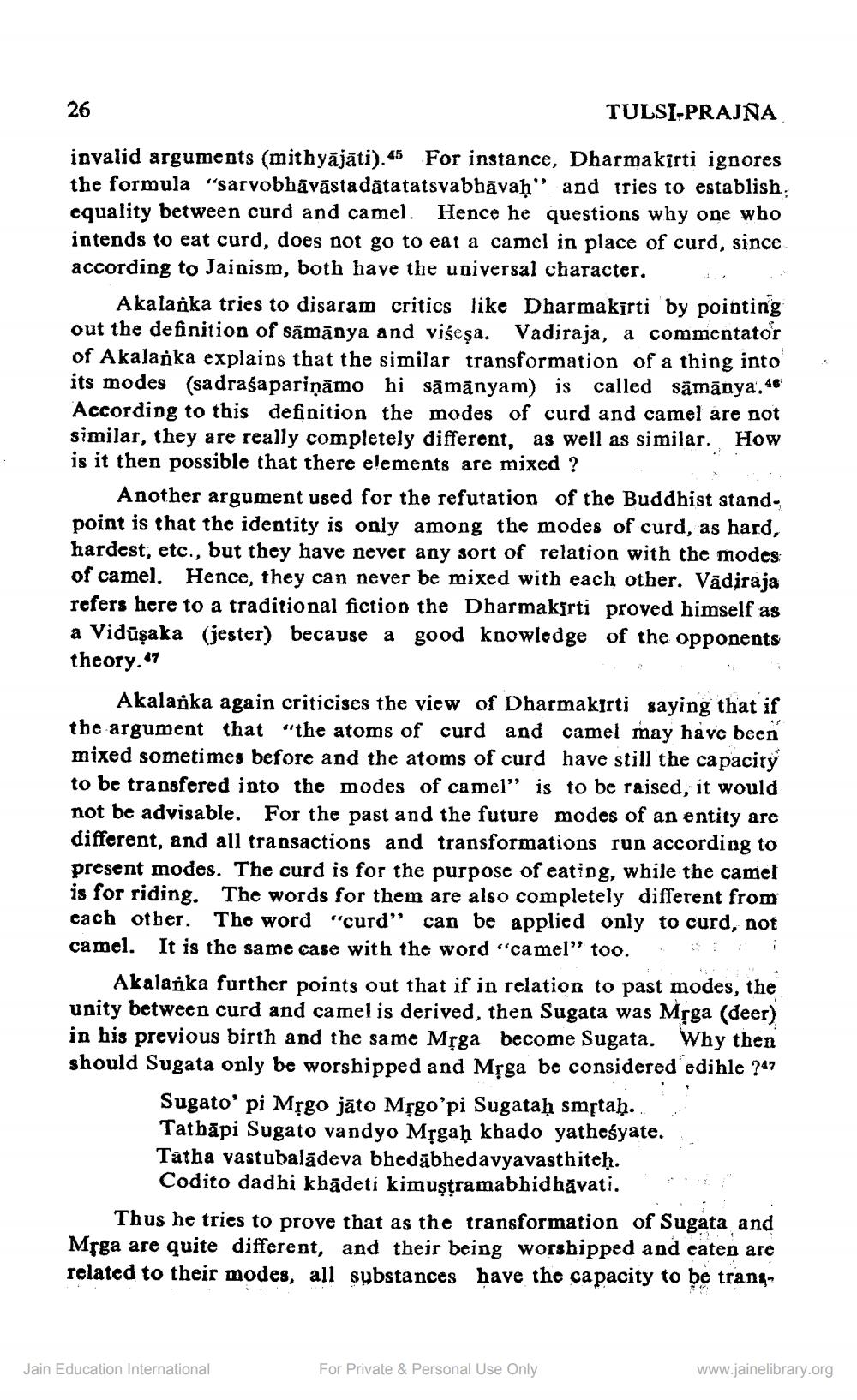________________
26
TULSI-PRAJNA
invalid arguments (mithyājāti).45 For instance, Dharmakīrti ignores the formula "sarvobhāvāstadatatatsvabhāvah" and tries to establish, equality between curd and camel. Hence he questions why one who intends to eat curd, does not go to eat a camel in place of curd, since according to Jainism, both have the universal character.
Akalanka tries to disaram critics like Dharmakirti by pointing out the definition of sāmānya and viseșa. Vadiraja, a commentator of Akalajka explains that the similar transformation of a thing into its modes (sadrasaparināmo hi sāmānyam) is called sämānya. 46 According to this definition the modes of curd and camel are not similar, they are really completely different. as well as simil is it then possible that there elements are mixed ?
Another argument used for the refutation of the Buddhist standpoint is that the identity is only among the modes of curd, as hard, hardest, etc., but they have never any sort of relation with the modes of camel. Hence, they can never be mixed with each other. Vadiraja refers here to a traditional fiction the Dharmaksrti proved himself as a Vidūşaka (jester) because a good knowledge of the opponents theory."7
Akalarka again criticises the view of Dharmakirti saying that if the argument that "the atoms of curd and camel may have been mixed sometimes before and the atoms of curd have still the capacity to be transfered into the modes of camel" is to be raised, it would not be advisable. For the past and the future modes of an entity are different, and all transactions and transformations run according to present modes. The curd is for the purpose of eating, while the camel is for riding. The words for them are also completely different from cach other. The word "curd" can be applied only to curd, not camel. It is the same case with the word "camel” too.
Thi! Akalaika further points out that if in relation to past modes, the unity between curd and camel is derived, then Sugata was Mşga (deer) in his previous birth and the same Mļga become Sugata. Why then should Sugata only be worshipped and Mțga be considered edible 247
Sugato'pi Mțgo jāto Mțgo’pi Sugataḥ smstah.. Tatbāpi Sugato vandyo Mļgaḥ khado yatheśyate. Tatha vastubalādeva bhedābhedavyavasthiteh. Codito dadhi khādeti kimustramabhidhăvati.
2: Thus he tries to prove that as the transformation of Sugata and Mpga are quite different, and their being worshipped and eaten are related to their modes, all substances have the capacity to be trans.
Jain Education International
For Private & Personal Use Only
www.jainelibrary.org




